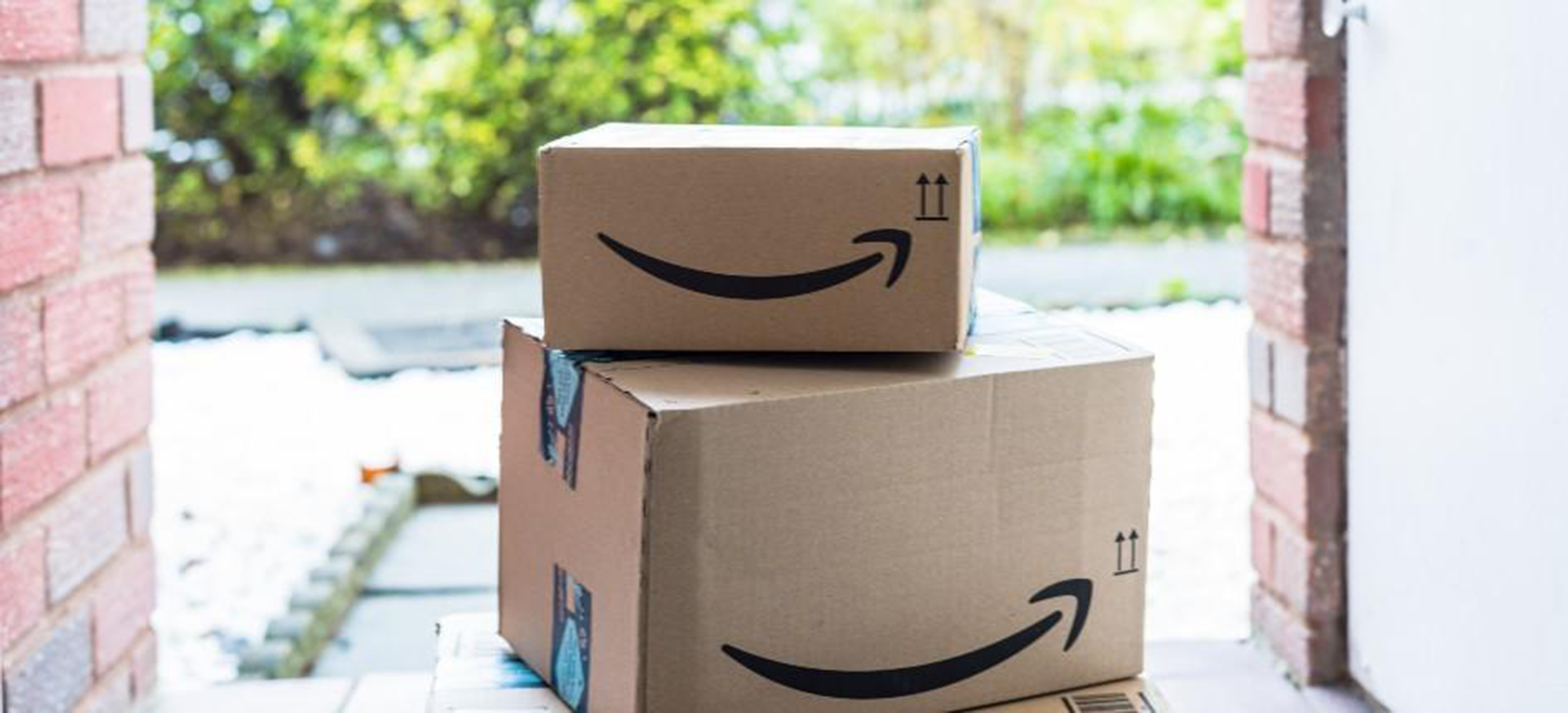How can swiss companies start a business on Amazon? We asked two experts – Frank Holzweißig, responsible for e-commerce of Rotho Kunststoff AG and Edoardo Vaghi, Client Strategist of Witailer.com, about their Amazon's business experience.
"We immediately want to thank Switzerland Global Enterprise for the always brilliant collaboration"


In 2020 e-commerce experienced incredible growth as consumers turned from shopping in-store to online. By the end of the year, 74% of buyers considered most shopping would remain online. The trends confirm that 2021 holds vast potential for e-commerce. The reason why companies are enthusiastic about doing business on Amazon is apparent: Amazon allows to reach millions of shoppers. According to Amazon's report, in 2019, the company globally delivered 3.5 billion packages. And, by 2021, Amazon intends to deliver 80% of its parcels.
How to pick a proper business model for Amazon?
Amazon offers two models: Vendor or Seller. Which model is the best for a Swiss company? There is no single solution. Both models bring advantages and disadvantages. The choice of the model is determined by the products and the companies' ability to manage B2C transactions or only B2B. The deciding criteria for the relevant model are product, management models, stock and sale price.
Edoardo Vaghi from Witailer.com clarifies: "As for the Vendor channel, Amazon selects its suppliers based on the products. The expected volumes determine this choice: the top sellers of each category are getting offers from Amazon. If the company can manage only B2B relationships, it should discuss directly with Amazon a potential business relationship. It will allow selling the products directly on the European Amazon domains".
Frank Holzweißig from Rotho Kunststoff AG says that ideally, a swiss producer should join both models on Amazons Marketplace in parallel. The advantage of the Vendor channel is the lower complexity related to managing a B2B relationship: Amazon handles the stock level and takes care of the orders of the end customers. The disadvantage is that Amazon will decide which products to buy from the supplier, excluding products not consider worthy and selling them to the end customer by their price. Seller's advantage is that you can give visibility to all products, not only those with higher rotations but also determine your selling price. However, organizational complexity grows as stock levels, and customer orders must be managed.
How to meet the Amazon requirements?
Amazons Seller-Model has a list of challenging requirements for Vendors Manufacturers, and on the opposite, the conditions for Amazons Vendor-Model are challenging for Retailers. According to Frank Holzweißig, it is caused by the internal infrastructure, either grown and optimized for B2B-business or the more granular Endconsumer-Business. Customer Service and Logistic are sticking points, which need to be mastered.
Edoardo Vaghi says that to start selling throughout Europe on Amazon, the company needs to have a VAT in at least one European country where the products are stored. "The advantage of Amazon Logistics is that there are no minimum quantities to ship. Sellers can decide whether to use the Amazon Logistics Service (also known as FBA), which allows them to store products in the Amazon warehouse network and use its logistics for shipping to the end customer. Or they can keep the stock at their warehouses and proceed independently to ship the orders to the end customers", - explains Vaghi.
The advantage of Amazon's Logistics is that it makes Prime-eligible offers, marked by Prime banner – synonymous with security, speed and reliability for Amazon customers. Amazon confirms that "78% of sellers who chose Amazon Logistics generate an increase in sales.
"Recently, several external logistics services have begun to provide "Prime-like" services. That is, complying with a series of stringent requirements imposed by Amazon to ensure its customers can still benefit from the Prime banner, despite not being Amazon Logistics" – ads Edoardo Vaghi.
How to start selling products on Amazon?
Choosing what to sell is undoubtedly the crucial settlement. After the demand, price and profitability determination comes the technical step:
• Fulfilment of the online shop
• Importing product data
• Creating product photos
• Promoting items
• Ensuring customer service
Managing technical issues is one of the most complex tasks to do. The high level of execution brings long-term success. According to Frank Holzweißig, Amazon Vendors and Sellers should develop all the marketing skills in-house. "Amazon SEO and Amazon SEA via Amazon's Advertising Platform – are the essential tools to master. Even if a company prefers to outsource services, understanding the platform's requirements is important to identify a competent partner. Any service can be outsourced. There are several agencies that help manufacturers start operations on Amazon and offers an Amazon cost-saving Full Service for Swiss producers who are on a low e-commerce maturity-level" - says Frank Holzweißig.
Edoardo Vaghi agrees with Frank Holzweißig and confirms that sales through the Seller channel can be managed in-house. However, the correct approach to the channel and the best usage of different services (advertising, for example) can be particularly complex if handled in house. "There are several partners that support the management of the channel: not only on the operational level but also providing well-defined strategic support, to take the full advantage of Amazon's tools to increase sales", – says Edoardo Vaghi.
What are the benefits of using Fulfilment by Amazon?
Amazon Fulfilment (FBA) has its advantages and disadvantages. FBA is challenging for online sellers. Many moving parts should be considered, and inefficiencies can lead to high costs and problems like shipping to the wrong address. Frank Holzweißig says that fulfilment by Amazon is an unbeatable Logistic service for many products. "Especially small goods can be provided on the highest service level. On the other side, it is not that attractive for goods with a bigger package volume. There are many advantages, particularly the possibility to distribute goods Europe-wide, without worrying for a logistic infrastructure" – underlines Frank Holzweißig.
Understanding the restricted products
Generally, on Amazon, companies can sell almost any type of product. Each product category has its specificities and rules. The requirements for some of them are strict and complex; particular actions are needed before starting to sell. Edoardo Vaghi says that Amazon provides a clear list of prohibited products within its platform. "All products with batteries or containing hazardous substances must be reported. Different categories or trademarks, easily subjected to counterfeiting or copyright infringement, may not be saleable by anyone." – explains Edoardo Vaghi.
How to pick the proper business partner for Amazon?
If you have a product and a strategy, the right partner can help achieve the goals more promptly and efficiently. For example, collaboration with logistic companies and marketing agencies can increase sales on Amazon.
While new cohorts of customers have adopted digital over the last year, undoubtedly the younger generations are more adept to shopping online. How is the industry reacting to a new generation of consumers?
In a nutshell: mobile, social media, inclusion, sustainability. Millennials and Generation
Z, so-called digital natives, are driving change. Young consumers now make up more than 40% of all luxury spending, generating global growth, according to analysis from Bain. These can be engaged via video links and are an increasingly important feature in luxury e-commerce. For example, Net-A-Porter is expanding its offering, hiring more than 100 new personal shoppers and client relations managers, pairing the most loyal customers with a dedicated personal shopper. Gucci is opening six customer service centers, staffed by 500 people, reinventing the traditional shop assistant for the smartphone age. The centers deal with enquiries by phone, email or live chat. There’s a lot more than this. So called “call-out culture” is enough to sour a brand’s reputation in an age where diversity and inclusion are key. From casting models, designers and workers from a variety of backgrounds to hiring chief diversity officers, luxury brands will look to promote their efforts in this space. Companies that don't pay attention are missing out. And, of course, there’s sustainability, which has been already embraced by many.
How can brands quickly prototype, trial, and implement innovative online and in-store experiences, to meet rapidly-changing consumer preferences?
Product innovation in luxury is key. Stores are no longer simply points of sale, but alluring, digitally enhanced destinations promoting luxury experiences, part of a brand’s digital marketing toolkit. Given the impact of the pandemic, brands must continue to innovate their in-store experiences to keep them safe, relevant, and engaging. But integration with digital is essential. Collaborations are another point: they are a tried and tested way for brands to increase their following and tell their story to new audiences. And then data. Going forward luxury brands will need to leverage data to offer more personalized, intent-driven content and experiences. Since data is disparate in the luxury sphere, drawing information from various customer touchpoints, via both physical and digital channels and creating personas, will be crucial to understanding intent. This is where unstructured data, artificial intelligence, and machine learning come to the fore to deliver mass personalization. Certainly, affluent consumers are becoming more aware of how their data is being used. They are also demanding more transparency from luxury brands when it comes to collecting data, the EU’s GDPR -- General Data Protection Regulation has created more awareness of this. But still there is plenty of chances to give loyal customers what they expect. It’s not just about offering recommended products or pushing new collections based off of previous purchases. Brands need to understand more about the kind of content that complements the lifestyle of its clientele, and serve up these unique moments in the right place, at the right time.

The first and only
Swiss Association of
e-Commerce.
Centro Galleria 1 A
Via Cantonale
6928 Manno CH
@ Dagorà Innovation Hub
T. +41 (0) 91 210 47 36
VAT no.: CHE-485.124.256 IVA
MÜHLE TIEFENBRUNNEN
Seefeldstrasse 229
8008 Zürich
T. +41 44 500 21 73
Blue Box, Chemin du Pré-Fleuri 3
1228 Plan-les-Ouates CH
T. +41 (0) 22 510 71 03
@ Fongit Foundation